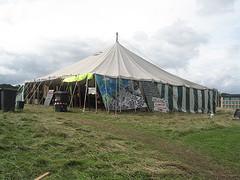 The vegetation tambmserve to reduce precipitation incidence in the ground and modifies aconcentrao of the humidity in the atmosphere and the adjacent surface. It possesss ambient muitasfunes, being able to be used in the architecture, civil engineering, the climatic control, the control of the temperature and the umedecimento of air. 3. URBAN CLIMATE EARQUITETURA IZARD & GUYOT (1980) abordamas climatic questions in the context of the bioclimtica architecture. They question comose can provide, to the occupants of the buildings that if construct currently, comfortable ambientesinteriores spending the minimum of energy, if not using maisque the disposals purely architectural. To answer the essequestionamento, are boarded aspects related with the climate, quaisse between them detach the more excellent climatic elements: the temperature of daily air and seuregime, the humidity of air and its daily regimen, the speed and the devento sector and its daily regimen, and the intensity of the direct and diffuse solar radiation, in daily regimen. KONYA (1981) relates, as the elements climticosprincipais for human well-being and the drawing of buildings, to radiaosolar, the temperature, the humidity, the wind, the precipitations and factors special, as the seismic movements, storms of dust, etc.
The vegetation tambmserve to reduce precipitation incidence in the ground and modifies aconcentrao of the humidity in the atmosphere and the adjacent surface. It possesss ambient muitasfunes, being able to be used in the architecture, civil engineering, the climatic control, the control of the temperature and the umedecimento of air. 3. URBAN CLIMATE EARQUITETURA IZARD & GUYOT (1980) abordamas climatic questions in the context of the bioclimtica architecture. They question comose can provide, to the occupants of the buildings that if construct currently, comfortable ambientesinteriores spending the minimum of energy, if not using maisque the disposals purely architectural. To answer the essequestionamento, are boarded aspects related with the climate, quaisse between them detach the more excellent climatic elements: the temperature of daily air and seuregime, the humidity of air and its daily regimen, the speed and the devento sector and its daily regimen, and the intensity of the direct and diffuse solar radiation, in daily regimen. KONYA (1981) relates, as the elements climticosprincipais for human well-being and the drawing of buildings, to radiaosolar, the temperature, the humidity, the wind, the precipitations and factors special, as the seismic movements, storms of dust, etc.
It says that to devereconhecer and to analyze certain amount of climatic data for each lugarconcreto, as average, maximum and minimum temperatures monthly, daily, umidaderelativa average, monthly principle and monthly minim, average precipitations, estadode sky, average amount of solar radiation, and direction and speed of the ventosdominantes, amongst other factors. It recommends that if it must evaluate the frequency, the provveldurao and the characteristics of the extreme climatic phenomena and of curtadurao. DOCHERTY & SZOKOLAY (1999) treat on the eferramentas techniques of drawing for the production of the bioclimtica architecture. Elesacreditam that the result of the climatic analysis would have to be one of the maisimportantes ingredients in the process of creation of an architecture project, since its embryonic phase.